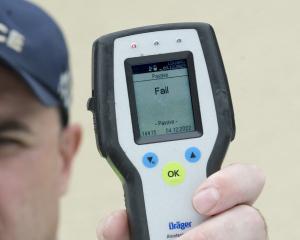The product design industry is being revolutionised by 3-D printers, providing significant benefits for the medical world, a Dunedin design lecturer says.
‘‘I studied industrial design 20 years ago and back then it was to teach you how to mass-produce products,'' Otago Polytechnic product design lecturer Andrew Wallace said.
In the past 10 years, rapid prototyping had introduced a new level of modification and customisation in the design process.
‘‘That stage of the process wasn't needed for things like washing machines ... but it was needed for medicine.''
In the past five years, medical intervention reached a point where mass-produced products, such as artificial joints, bone replacements and prosthetics, were not valued.
‘‘They need modification, they need customisation. In the world of medicine the biggest opportunity is in health and custom devices - both external like a walking stick handle or internal like a ... joining plate.
‘‘You can basically 3-D print a metal part - the world now has 3-D printers that can print titanium, magnesium, stainless steel.
‘‘That is the future for product design - custom, individually designed, specific solutions.
‘‘That changes the world.''
Product design now had global reach as it was a ‘‘weightless skill'' - a product designer in New Zealand could design a product on their computer and print it from any 3-D printer in the world.
More product designers were needed to make the most of this rapidly changing industry.
‘‘There are about 300 million customers looking for custom solutions for existing problems or health problems they are about to experience.
‘‘It should be the highest-supported industry in the country for research and development.''
Product designers were only limited by their knowledge of materials and geometry, and capacity to communicate.
Mr Wallace makes brightly coloured 3-D-printed handles for visibility sticks, provided to the Visual Impairment Charitable Trust Aoteroa. Founding trustee Lynley Hood said the sticks helped make visually impaired people more visible to others.
Mr Wallace is hosting free interactive online drawing classes to introduce secondary school teachers, pupils and their parents to product design.
‘‘I'm offering this course to give students skills and forget about the quality of their drawing, forget about assessment, and focus on a way of thinking,'' he said.
‘‘I'm going to teach them a way of thinking freely so they can focus on the ideas, not the delivery.''
For more information about the online classes go to the Drawing to Communicate Facebook page.
- by David Beck













